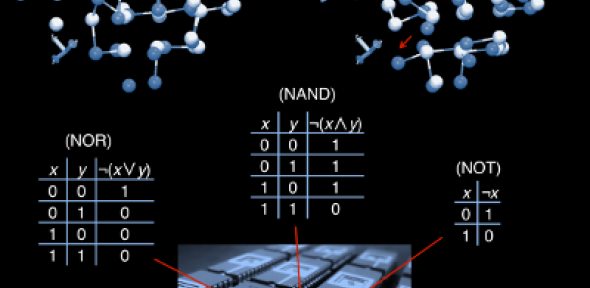
Joint experimental and computer-simulational work by Stephen Elliott and his group, and researchers from both the Data Storage Institute and the Singapore University of Technology and Design, has opened a doorway for developing faster computers.
The research is reported in a paper published this month in the Proceedings of the National Academy of Science (PNAS). It describes the development of 'in-memory logic' devices where arithmetic logic operations are performed and stored in a non-volatile fashion in the same cell, instead of being spatially separated as is the case in the current von Neumann-like architecture used in all present computers. This advance could lead to new computer architectures having even greater capacities, faster processing speeds and lower energy consumption than existing architectures.
The heart of the logic/memory cell is based on a 'phase-change memory' (PCM) material, such as Ge-Sb-Te, which can be switched – by the application of appropriate sequences of voltage pulses – reversibly and rapidly (sub-ns) between metastable structural states having different electrical characteristics: crystalline conducting states, and amorphous (glassy) resistive states. First-principles computer simulations carried out in the Department have provided an understanding at the atomistic level of the structural changes induced in the PCM by particular combinations of voltage pulses leading to various logic operations (NAND, NOR, NOT).
